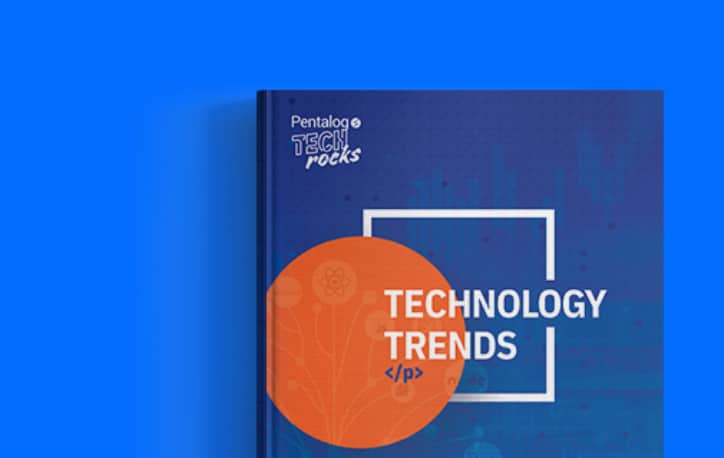Clean, reliable records are non-negotiable for data teams. The real question is which approach to data quality better fits their needs.
For some, that means prioritizing governance and auditability. For others, it means having full control over how data is profiled, standardized, and matched across systems.
That’s where the comparison between Datactics and Data Ladder often comes in.
Datactics leans toward the first camp. It enables stewardship teams to define and monitor data quality rules, validate datasets against regulatory standards, and build auditable workflows. The platform has specifically carved a niche in regulated sectors, particularly financial services and government.
Data Ladder, with its flagship product DataMatch Enterprise (DME), takes the second approach. It gives users granular control over profiling, cleansing, and high-precision matching, while maintaining transparency in rule design and transformation logic. With broad integration options and user-friendly design, it serves organizations across industries that want both speed and explainability in their data quality initiatives.
This comparison looks at both platforms side by side so you can decide which best supports your operational priorities, your industry, and the expectations placed on your data pipelines.
Whether you’re searching your first-ever data quality platform or evaluating a Datactics alternative that offers more control over data matching, this guide will clarify when and why Data Ladder is the right fit.
Data Ladder vs. Datactics: Platform Orientation and Core Users
| Feature Area | Data Ladder (DataMatch Enterprise) | Datactics |
| Primary Focus | Data profiling, cleansing, parsing, standardization, matching, deduplication, merge-purge. | Governance-first: rule definition, data validation, monitoring, matching, remediation |
| Delivery Model | Desktop, server, and REST API; UI-driven workflows; supports hybrid deployment | Cloud-first with on-prem option; rule-based configuration engine; compliance-focused |
| Primary Users | Anyone, including data analysts, data engineers, business users, who needs hands-on control, fast results, and accurate, transparent matching | Data stewards, compliance and governance teams, technical data ops |
| Strengths | High-precision matching, transparent/ configurable rules, ability to apply compliance parameters through profiling and cleansing, merge-purge with live preview, wide connector set, ease of use, broad industry adoption | Governance, regulatory compliance (BCBS 239, AML/KYC), auditability |
| Pricing | Fixed-cost licensing; predictable pricing; no seat/record/volume-based charging | Enterprise licensing; typically, larger investment tied to compliance-heavy needs. |
Takeaway:
- Datactics is optimized for organizations where governance and compliance drive data operations. Its strength lies in defining, applying, and monitoring data quality rules, and integrating with existing governance frameworks.
- Data Ladder is built for teams that prioritize flexibility, transparent matching, and end-to-end preparation across varied industries. It offers a highly configurable engine for profiling, cleansing, and matching, but its key differentiator is the control, precision and transparency it provides in match rule design and transformation logic. These features make Data Ladder one of the best Datactics alternatives for those who seek reliability without compromising flexibility or control.
Data Matching Capabilities: Rule-Based Control vs. Governance Frameworks
| Matching Feature | Data Ladder (DataMatch Enterprise) | Datactics |
| Methodology | Deterministic & probabilistic; configurable rules, weights, patterns, and tokenization | Deterministic & probabilistic matching with AI-assisted rule suggestions |
| Transparency & Audits | Full visibility into match logic; every match is traceable and explainable | Traceability through rule lineage and logs, but algorithm internals (scoring functions, weights) are less exposed/more abstracted; strong compliance reporting |
| Configurability | Very high; supports pattern libraries, weight tuning, tokenization, | High; rules configurable via UI, but less direct access to algorithm internals; optimized for governance workflows rather than deep algorithm control |
| Match Use Cases | Deduplication, record linkage, survivorship, golden record creation | Identity resolution, regulatory (AML/KYC) validation, compliance remediation |
Key Distinction:
Both platforms provide strong data matching, but their orientation differs.
- Data Ladder is well-suited for teams that want hands-on control over match logic and real-time tuning for higher match accuracy.
- Datactics embeds matching inside governance frameworks, making it a strong option for compliance-driven use cases.
Data Quality Rule Management and Profiling
Datactics provides a strong interface for defining, applying, and managing business and regulatory rules across datasets. It’s particularly useful for:
- Validating data against regulatory standards
- Building a centralized rule repository
- Tracking exceptions and remediation workflows
Data Ladder also offers profiling and cleansing, with a stronger emphasis on:
- Identifying data quality issues as a precursor to matching
- Cleaning, parsing, and standardizing data
- Designing pattern-based transformations for accurate matching results
- Enabling teams to define and enforce validation rules during data preparation to support data quality and compliance efforts
Summary:
- If your team’s primary goal is ongoing rule governance tied to compliance, Datactics is well-equipped for it.
- If your focus is preparing, matching, and integrating accurate datasets for entity resolution, golden records creation, or delivering clean records into downstream systems, Data Ladder makes a strong alternative to Datactics.
Ease of Use and Team Fit
| Area | Data Ladder (DataMatch Enterprise) | Datactics |
| User Experience | Intuitive UI; visual rule and match designers | Structured for compliance teams and data ops |
| Coding Requirements | No-code workflows; optional API usage | Low-code with some scripting for advanced use cases |
| Learning Curve | Minimal to low; iterative tuning might take some trial and error | Moderate; governance concepts add complexity |
Takeaway:
Both Data Ladder and Datactics support low-code/no-code configurations. However:
- Data Ladder provides more visual guidance for match rule tuning and real-time feedback on precision and recall, making it easier for business users and analysts to iterate.
- Datactics is more structured around compliance workflows.
Integration and Deployment Flexibility
| Factor | Data Ladder | Datactics |
| Deployment Options | On-prem, cloud, hybrid | Cloud-native, private cloud, or on-prem |
| API Access | Yes (REST API, CLI, SDK options) | Yes (API-driven engine for rule execution) |
| Data Source Support | 150+ integrations (databases, CRMs, ERPs, flat files) | Broad data connectivity (particularly strong in financial systems) |
Insight:
Data Ladder’s strength lies in wide out-of-the-box integrations and cross-industry deployment, while Datactics is often customized for specific regulatory data pipelines.
Both provide enterprise deployment and security options, including integration into data lakes and MDM systems.
When to Consider Data Ladder as a Datactics Alternative
If you’re evaluating a Datactics alternative, here are a few scenarios where Data Ladder makes a better fit:
| Consider Data Ladder if… |
| You require transparent, hands-on control of match logic |
| You need a broad data quality pipeline with profiling → cleansing → standardization →deduplication → matching → merge-purge |
| You operate in an industry that values, prioritizes, or benefits data accuracy and auditability, even if not highly regulated |
| You want a single data matching solution that combines profiling, cleansing, standardization, and record linkage |
| Your team prefers visual workflows and granular control over black-box automation |
| You need a predictable, fixed licensing model with no surprise costs or usage-based charges |
While Datactics shines in financial services and rule-based data validation for compliance workflows, Data Ladder can complement or replace that functionality in environments that value agility, traceability, and cross-industry applicability.
Conclusion
Both Datactics and Data Ladder provide powerful solutions for improving and managing data quality, but with different emphases:
- Datactics is governance-first and thus, better suited to regulated industries needing compliance-focused rule management.
- Data Ladder provides a transparent, flexible, and cost-efficient Datactics alternative that excels in match accuracy, user control, compliance-ready data preparation, and cross-industry applicability.
Whether you’re exploring a comprehensive data matching solution or seeking a Datactics replacement that prioritizes explainable matching, flexible deployments, and broad integration, Data Ladder should be at the top of your shortlist.
Want to see it in action?
Download a free trial of DataMatch Enterprise today.
Or
Book a personalized demo with our data expert.





































